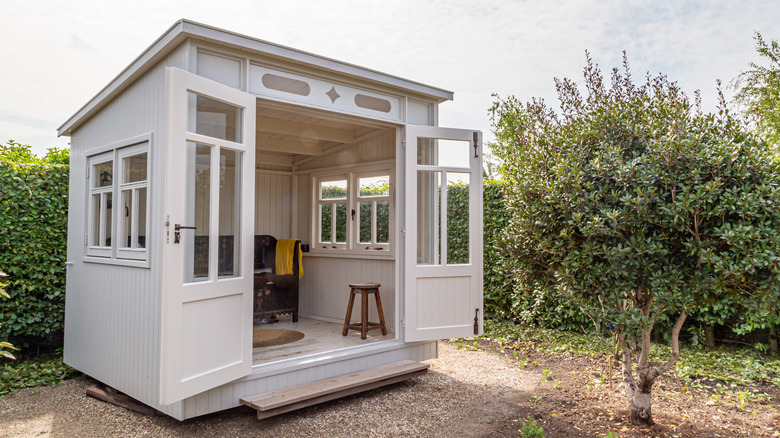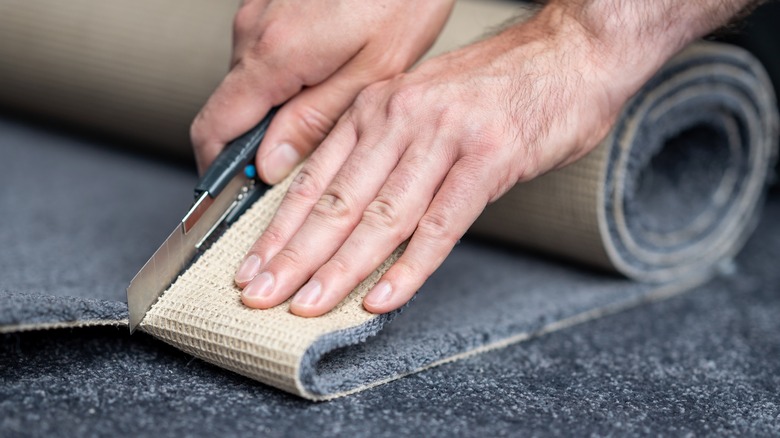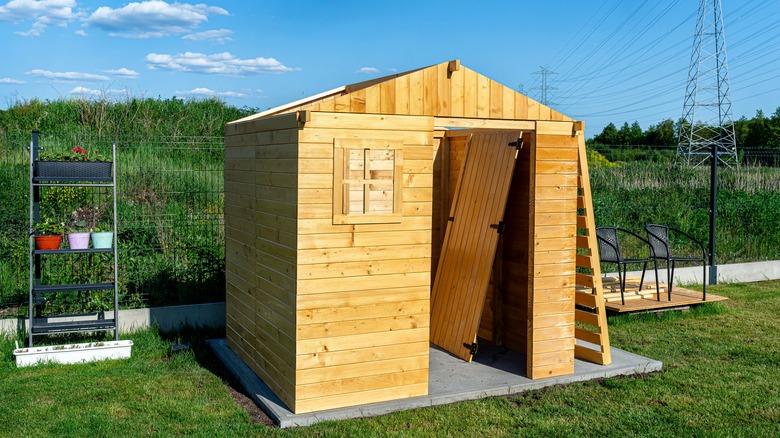Top Flooring Options For Your Outdoor Shed, According To Our Construction Expert
Choosing flooring for an outdoor shed can be tricky, especially if you have no idea what your options are or feel confused by floor trends. Thankfully, Skylar Bartlett, owner of Kreer Construction, gave House Digest the exclusive scoop on exactly what your flooring choices are for an outdoor shed and how you can get the best bang for your buck. If you think your options are limited, guess again; it turns out plenty are available, so there's really something for everyone. For example, Bartlett detailed that indoor carpets, rubber mats, interlocking tiles, and glue down click-and-lock luxury vinyl planks (LVP) are all feasible for shed floors. However, what you choose will boil down to a number of considerations, including how much time you can dedicate to keeping your floors clean. Just as is the case when you upgrade any area of your home, there is plenty to think about.
"The most important factors to consider are: whether temperature control is a possibility (this impacts if a floor warps or not), potential moisture exposure, how much wear and tear is expected, and your budget," Bartlett explained. While this might sound complicated at first, luckily, Barlett is here to help us understand the nuances of outdoor shed flooring.
Picking flooring for your budget
In her chat with House Digest, Skylar Bartlett detailed which option is best if you want to keep costs down. "The absolute cheapest option would be glue down carpet. It's nice because it's affordable, and can be made even more so by shopping for remnants at local stores, and is low maintenance. Additionally, since it's glued in you won't have to worry about temperature changes causing warping. Installation is straightforward and doesn't require a pro. However, it's not the most resistant to dirt." So, while a glue down may be the cheaper option, you may end up having to replace it more often over the long term, thus racking up costs. Your best bet is to keep on top of cleaning it, especially if you often trample around your shed in muddy wellies, for example.
Aside from carpets, there are also other products to try, especially if you have a larger budget. "What's really worth the splurge is glue down click-and-lock LVP," said Bartlett. "Once it's set in the glue, it's nearly permanent, so it's not subjected to extreme fluctuations like a traditional floating floor. On top of that, there's a wide range of styles available, it's durable, and super easy to maintain." While it may last a while, Bartlett added there are some drawbacks: "It's an expensive option and can be a difficult installation for the novice DIYer. For an average 8x10 shed expect to pay around $400 for material and $600 or more with professional installation."
You may not even need flooring
Another option for those with a higher budget is interlocking tiles. Bartlett went into detail on the topic in her House Digest interview. "My recommendation that's worth the splurge in this case is interlocking tiles. They're made to withstand heavy weight, spills, and stains, and can be replaced quickly if needed. I prefer them over the rubber mats because they don't absorb whatever might drop on them." You should find these quite easy to assemble yourself, but you can always have a professional install them if you want a guaranteed high-quality result. If you're up for a bit of DIY, then this will help to lower your project costs slightly.
Depending on the current floor in your shed, you may not even need to install anything at all. In the same interview, our expert noted, "If you have a shed with a concrete foundation and not plywood, that's already a great, durable option. If you're looking for a way to spruce it up you can try a concrete coating [around $55 per can] to seal it." Of course, it goes without saying that this is a much more cost-effective option if you're happy with the way it looks and its functionality. It will all boil down to how you use your shed.


